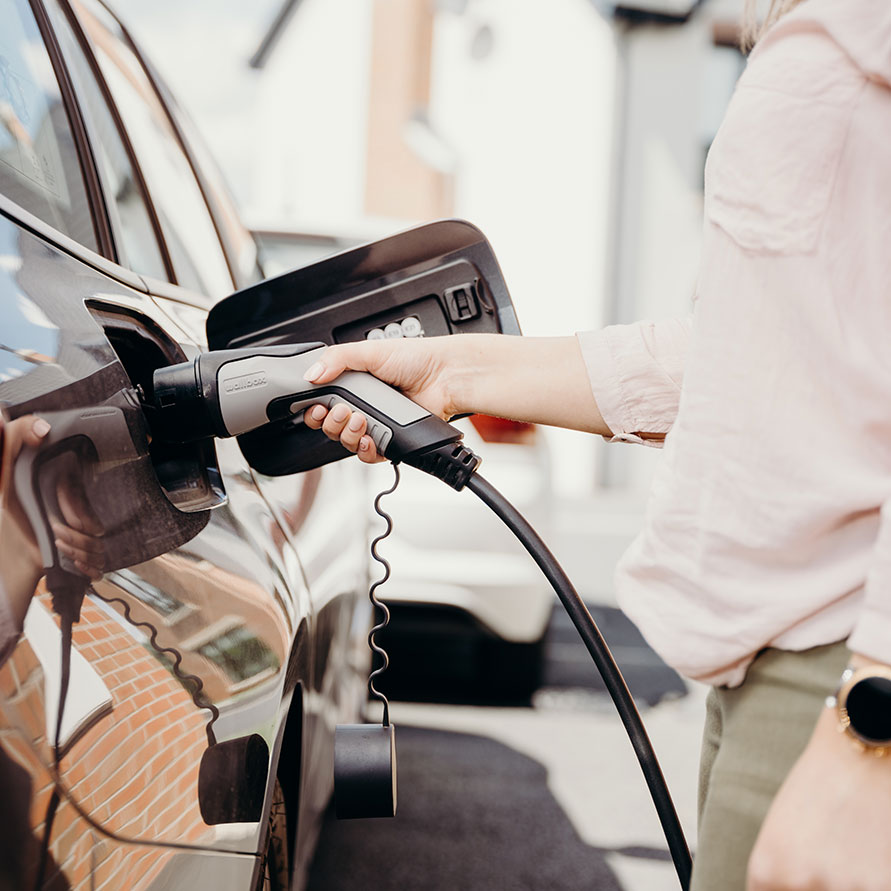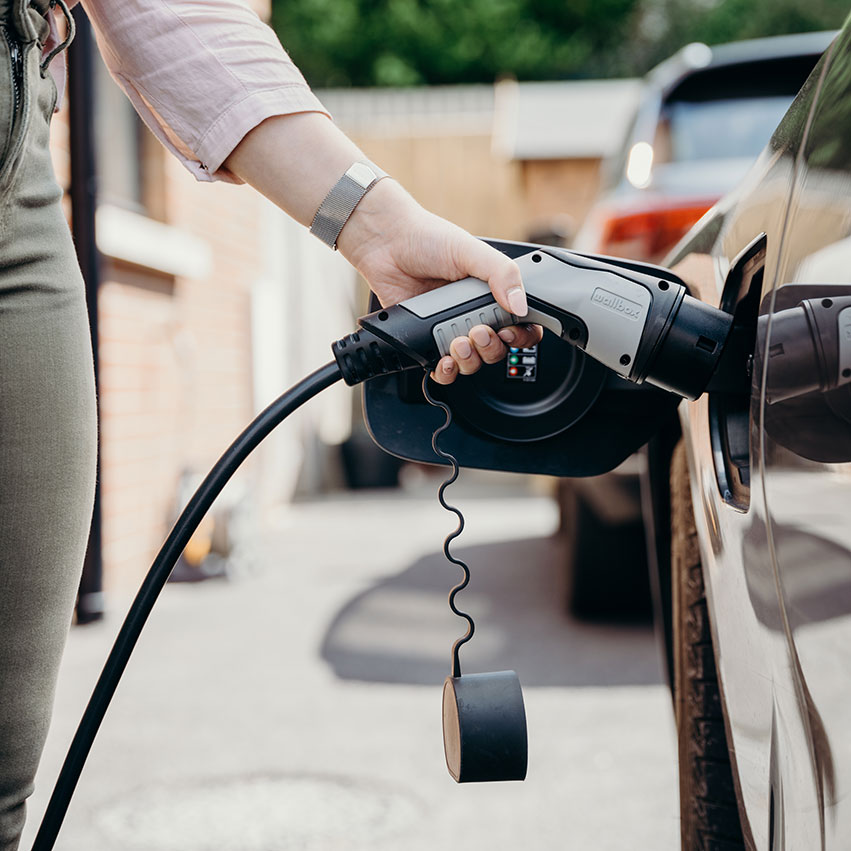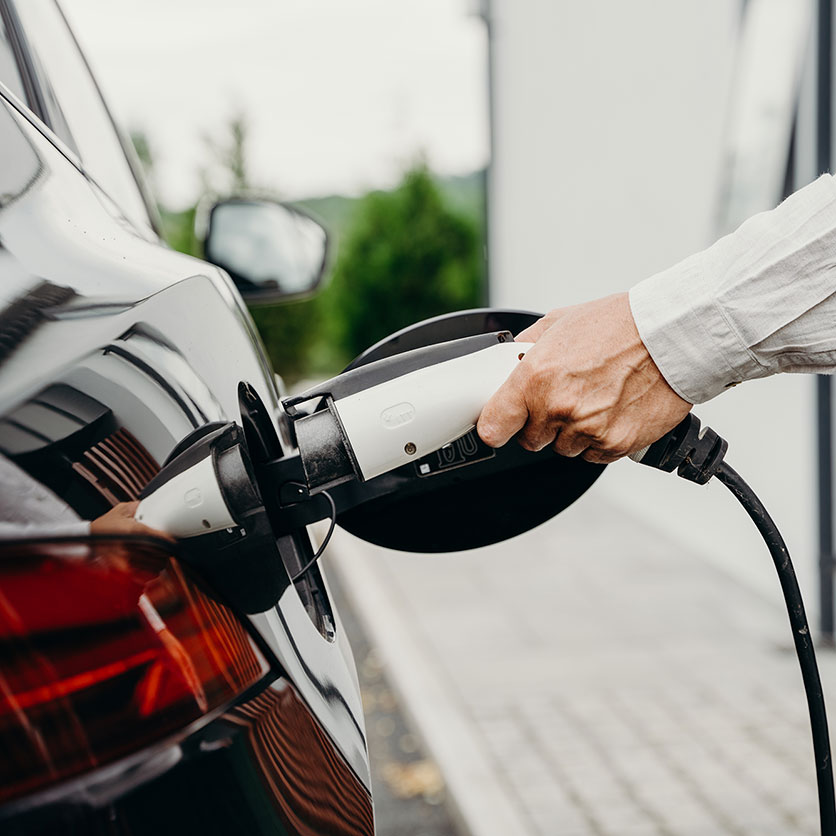More and more of us are now driving electric cars — but how do they actually work? We’ll give you the lowdown on batteries, motors and everything else that goes into making electric cars drive.
What is an electric car & how do they work?
An electric car runs on electricity rather than the petrol or diesel used by conventional vehicles.
While internal combustion engine cars rely on burning fossil fuels to generate power, electric cars are powered by lithium-ion batteries. With no combustion and fewer moving parts, electric cars are often cheaper to service and run. They’re also much better for the environment.
Electric vehicles (or EVs) can be either fully electric or part electric.
Fully electric cars — also called battery electric cars and pure EVs — are powered solely by electricity. This is the type of electric car that’s being referred to when you hear about them producing no emissions.
Part electric cars — such as hybrids and plug-in hybrids — have both electric motors and internal combustion engines. They run on electricity for as long as their charge lasts, before swapping to a petrol or diesel engine.
Types of electric cars
Let’s look at the various different types of electric cars in a bit more detail and see how they compare to each other.
| Plug-in electric cars | Plug-in hybrid cars | Hybrid-electric cars |
|---|---|---|
| A plug-in electric car (or 100% electric car) is powered only by electricity. You charge the battery at a charging station and the car will typically run for 100-300 miles before needing to be charged again. | A plug-in hybrid car has a battery, electric drive motor and internal combustion engine. It will have an electric range of 50 miles before you need to recharge it or revert to the combustion engine | Hybrid-electric cars run mainly on petrol or diesel but also have an electric battery. The battery gives you some electric miles and recharges when you brake, but the car ultimately relies on its combustion engine. |
Key components of an electric car - take a look inside
The way in which an electric car works is completely different from how traditional internal combustion engine cars work, so the internal parts of electric cars are different too. We’ll take a look at the most important components of an electric car and the part they play in making it drive.

Traction battery
The traction battery stores all the energy needed to power an electric car’s motor as well as other electrical systems, such as air conditioning (although some electric cars have an auxiliary battery that powers everything other than the motor).
A traction battery pack is made up of multiple lithium-ion batteries. Lithium-ion batteries are used in nearly all electric vehicles because they store energy well, produce larger electrical currents, and don’t need much maintenance.
Traction batteries are usually found at the bottom of an electric car. They are often just in front of the rear axle and in the centre of the vehicle for equal weight distribution.
Different traction batteries have different capacities, which are measured in kilowatt-hours (kWh). The higher an electric car's battery capacity, the greater the distance you can drive on a single charge. But larger batteries are heavier, which might impact performance and use more energy.
Inverter
An electric car’s inverter takes the direct current (DC) from the battery and turns it into an alternating current (AC), which can be used to power the motor.
The lithium-ion batteries used in electric cars can only be charged with DC power, but electric traction motors need AC power. That makes the inverter a crucial part of an electric car.
The inverter is usually found under the bonnet and will be above or very close to the electric traction motor. By controlling the frequency of AC power sent from the battery to the motor, inverters also control the speed of the electric car.
Electric motor
The electric motor, or electric traction motor, gives the electric car the power it needs to move. You’ll usually find the electric motor above the front axle of an electric car.
Taking the AC power from the inverter, the motor uses a magnetic field to create the movement that makes it turn. This process is very efficient and really powerful. When you press the pedal, the power is created almost immediately for an instant response.
With no lengthy acceleration process and no gears to go through, an electric motor creates less noise, fewer vibrations and faster acceleration than conventional cars. The motor is also able to recharge the battery using the energy generated by braking. This is called regenerative braking.
Drivetrain
The electric drivetrain takes the power generated by the motor to the wheels so that the electric car drives. It acts as a single-speed transmission, unlike the multiple gears of a conventional car. The drivetrain is usually found in the middle of the front axle so that it can distribute power equally to both wheels.
It is the single-speed transmission of the drivetrain, coupled with the power and efficiency of the electric motor, that allows electric cars to achieve such quick, quiet and smooth acceleration.
Electric charge port
An electric car’s charge port is where you connect an external power source to charge the traction battery. The power source is called electric vehicle supply equipment (EVSE), but most of us call them charging stations.
Charging stations can be fitted at residential addresses for convenient overnight charging. Alternatively, Public charging stations are often found at service stations, car parks, workplaces and supermarkets. Public charging stations often deliver a much faster charge than home chargers — we’ll look at the various types of charging stations in more detail below.
The location of charge ports varies between different electric cars. Some mimic the location of fuel caps on conventional cars, some are in a similar height and location but at the front of the car, and others are found under the bonnet.
Electric car charging
Charging an electric car can seem daunting if you’re new to it. But it’s actually very simple and — once you’ve had the charging process explained — it’s no more complicated than fuelling a conventional car.
The biggest difference between the two is that, while you can quickly fill up your tank with petrol or diesel at any petrol station, electric car charging needs a little more planning for longer journeys.
Since a full charge might take up to eight hours, it usually makes sense to fully charge the night before a big trip and, if needed, break up your trip with a stop at a rapid charger, which will normally give you an 80% charge in 20-30 minutes.
The other key consideration is the different types of chargers and connectors for electric cars. We will look at all those in more detail now.
Electric car charger types, connectors and speeds
There are three different types of electric car chargers based on the speed at which they charge your car: slow chargers, fast chargers and rapid chargers. All will charge an electric car equally well — it’s just the time taken that will vary.
Slow chargers
Slow chargers are typically home chargers, though some older public charging points are also slow chargers. They are usually rated at 3kW, which means they will take between 8 and 10 hours to achieve a full charge. This makes them convenient for overnight charging at home but less useful if you need to recharge your car in a hurry.
Charging time: 8-10 hours
KwH offered: 3kW
Plug type: Most are Type 2 connectors
Miles range per hour: 10 miles
Fast chargers

Fast chargers are increasingly the most popular type of electric chargers in the UK, including becoming a more popular option for home chargers. With a rating of 7kW or 22kW, even a ‘slower’ fast charger halves the charging time of slow chargers. Most public charging points in the UK are 7kW-rated fast chargers.
Charging time: 4-6 hours for 7kW, 1-2 hours for 22kW
KwH offered: 7kW or 22kW
Plug type: Most are Type 2 connectors
Miles range per hour: 30 miles (7kW) to 90 miles (22kW)
See if our range of EV charging products would be a suitable charger for your home.
Rapid Chargers

Rapid chargers are the quickest electric car chargers. They are rated between 43kW and 150kW. There are also DC rapid chargers, which typically work at 50kW but operate at up to 350kW in the case of the newest chargers. Some electric cars are not compatible with the latest range of ultra-rapid chargers, but those that are can get a full charge in little longer than a conventional petrol stop.
Charging time: 20-60 minutes for 43kW, 10 minutes for 350kW
KwH offered: 43kW-350kW
Plug type: Combined Charging System (CCS) (Most also use Type 2 connectors, but this increases the charge) time
Miles range per hour: 180 miles (43kW) to 200+ miles
How long to charge an electric car
How long it takes to charge an electric car will depend on a range of factors, including the type of charger available, the size of the battery, and the car’s suitability for the most powerful chargers. Even colder temperatures can result in a slightly longer charging time.
Generally, a 7kW charger — now widely available in the UK — will fully charge an electric car in six to eight hours. The fastest 350kW ultra-rapid charger will fully charge compatible cars in just 10 minutes.
Power NI electric vehicle tariff
To make charging electric cars in Northern Ireland even simpler and even more sustainable, we’ve created an electric vehicle tariff that gives you cheaper charging via lower night-time rates.
We'll also source the amount of electricity you use from 100% renewable sources, which means you'll also reduce your carbon footprint.

